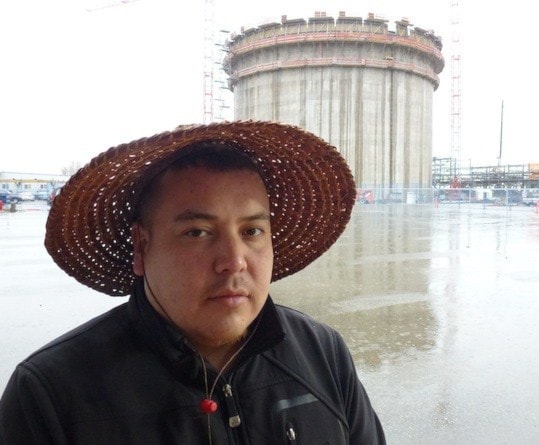A new liquefied natural gas plant is being proposed by the Tsawwassen First Nation, Fortis BC and other partners but TFN leaders will first put it to a vote of their members to gauge their support before actively pursuing it.
Chief Bryce Williams said he will follow the will of his people, but believes the project would offer significant benefits, including revenue for the TFN and up to 100 long-term jobs for members.
"I think it's a very interesting project and it has very good potential of moving forward," Williams said, adding he's not taking sides in the vote set for Dec. 16. "I'm on the fence. I recognize all the benefits. There are some negative impacts to think about as well."
It would be the third LNG export proposal in the Lower Mainland in addition to the Woodfibre LNG plant proposed near Squamish and the Wespac LNG export terminal in Delta, which would ship out LNG produced next door at Fortis BC's long-running Tilbury plant.
The project would occupy 32 hectares of treaty land the TFN have already zoned for industry and would likely otherwise be developed as warehousing.
Five to six LNG carriers would dock at Deltaport to load LNG from the TFN plant, in contrast to the Wespac jetty proposal, which would see LNG carriers ply the lower Fraser River.
The plant would compress and supercool three to five million tonnes of natural gas per year to liquid form for export.
That's about a quarter the size of the $11-billion Petronas LNG proposal near Prince Rupert but larger than the $1.7-billion Woodfibre proposal.
Unlike most other LNG proposals in B.C., the TFN plant would use electric drive compression instead of burning natural gas to power the process.
The project would require a 10-kilometre extension of Fortis BC's pipeline in Delta.
If all three projects currently proposed in the region advanced, Fortis BC officials say there would have to be capacity upgrades to the main natural gas pipelines that run to the Lower Mainland from northeastern B.C.
TFN officials said it's too early to say what proportion equity stake the first nation would get in the project, or what direct benefits might flow to members.
It's proposed as a joint venture that includes Fortis BC LNG Development Inc., Mitsui and Nexterra, and could be in operation as early as 2022, subject to environmental approvals and a go-forward business decision.
The announcement came Monday at Fortis BC's LNG plant at Tilbury, which is in the midst of a $400-million expansion.
It's the only operating LNG facility in B.C. and company officials said they've signed $50 million in local contracts since ground was broken a year ago.
Much of the expanded LNG supply would be available for local use in B.C., such as in buses and ferries, as well as industry.
TFN joint ventures are among the businesses benefitting from the Fortis Tilbury expansion.
Not all of the 20 LNG projects proposed in B.C. will advance, Premier Christy Clark said, but added she hopes the Squamish, Tilbury and TFN projects succeed.
"I think it would be fantastic," she said. "It's jobs for people in the Lower Mainland."
